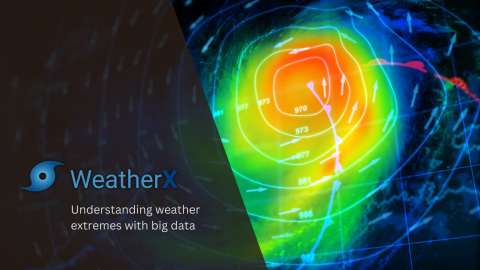Body
Image

Learning about big weather with big data
The WeatherX project developed and has been studying multi-week curriculum units for middle-school science classes to promote understanding of and interests in fundamental data practices and scientific data careers among students in low-income rural communities. Using WeatherX materials, students work with large-scale data to investigate typical and extreme weather in their local areas and on New Hampshire’s Mount Washington – a place nicknamed “The Home of the World’s Worst Weather.” The project has been led by researchers and developers at Education Development Center, the Mount Washington Observatory, the University of Maine at Orono, the University of Washington in Seattle, and the Concord Consortium, and it has collaborated with 12 teachers and over 470 students in rural New Hampshire and Maine.
Pillar 1: Innovative Use of Technologies in Learning and Teaching
WeatherX has developed an online portal that provides access to current and historic large-scale weather data from the National Oceanographic and Atmospheric Administration (NOAA) for almost 1,800 weather stations across the U.S. The portal is freely available to the world as a plug-in within the Common Online Data Analysis Program (CODAP), the online data analysis and visualization tool that students use to investigate local and Mount Washington weather data.
Pillar 2: Partnerships for Career and Workforce Preparation.
As a key project partner, the Mount Washington Observatory (MWOBS) helped the project develop and study Chat with a Scientist experiences, in which students in participating WeatherX classrooms connected through a live video connection with weather scientists who work and live on the summit of Mount Washington. Typically lasting 30 to 50 minutes, the Chats followed a question-and-answer format, in which students could ask questions about scientists’ work and personal interests as well as about weather and climate.
Pillar 3: Strategies for Equity in STEM Education
WeatherX has focused on serving low-income rural communities in NH and ME. Following a place-based learning strategy, students learned to graph and analyze large-scale weather data from their local area and Mount Washington. Students tapped into the cultural wealth of their communities by interviewing community members about their experiences with weather. Students also learned about careers in their area that use weather data.

Discipline(s)
Data Science
Environmental sciences
Target Gradespan(s)
Middle school (6-8)
Target Participant(s)
Youth / students
Educators
Project Setting(s)
Formal Education
Category
Developing and Testing Innovations (DTI)
Strategies